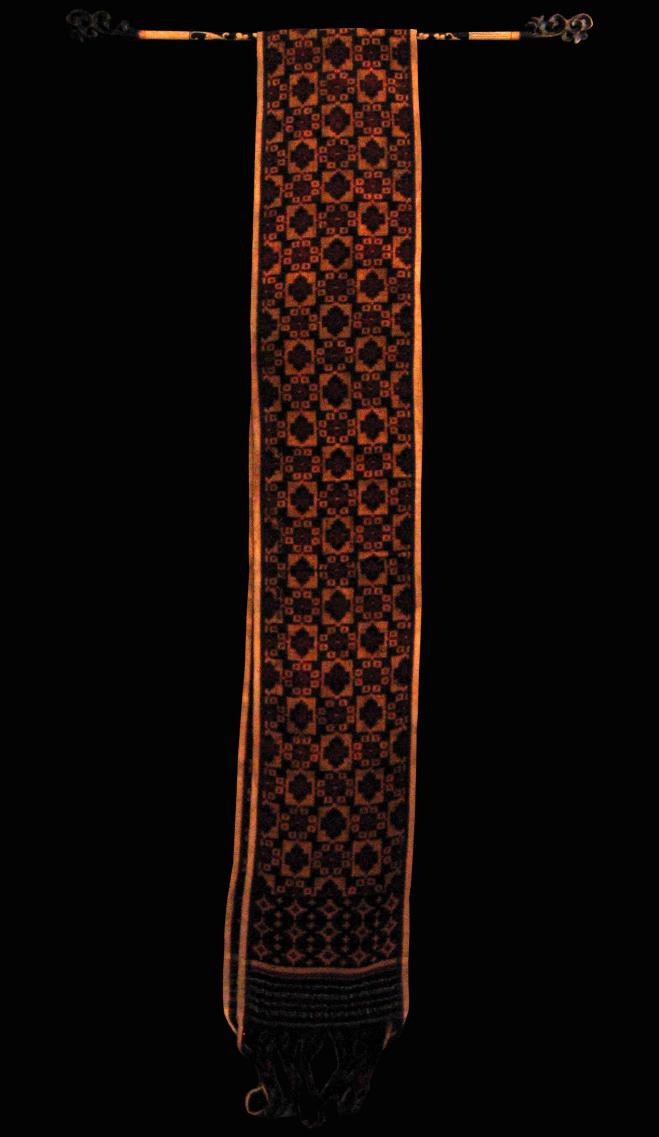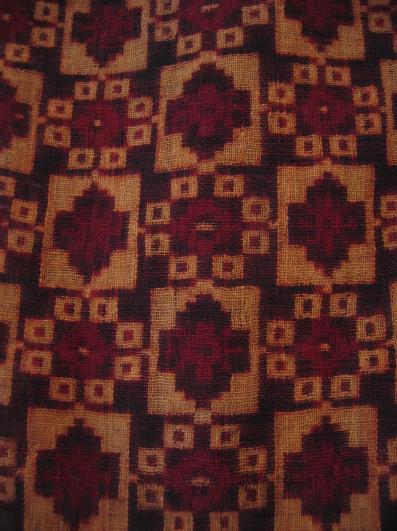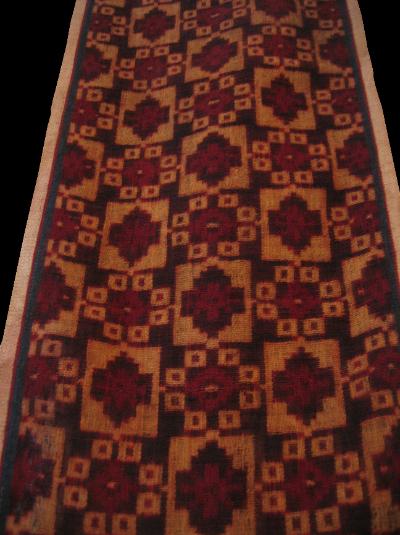
Antique Gerigseng Double Ikat, Bali
Geringsing (Double-Ikat) Cawat Ding Ding Si Gading Cloth
Tenganan, Bali, Indonesia
circa 1920
length: 296cm, width: 22cm
Geringsing cloth is the much fabled cloth from one particular village in Bali – the village of Tenganan Pegeringsingan in north-east Bali, which is noteworthy not only for this rare cloth but for its unusual customs that sets it apart from other Balinese villages and communities.
The villagers of Tenganan are known as Bali Aga, or ‘original Bali’. They worship Indra and consider themselves to be quite separate to conventional Balinese as do other Balinese. Their culture appears to be a form of pre-Majapahit Balinese culture. It is very insular. The village is small and walled. Villagers must marry within the village; those who do not are forced to live outside its walls.
Geringsing is a double-ikat cloth, meaning that it is a highly complex and laborious textile to produce, hence its expense even when bought new. It requires the resist dyeing of both the warp and the weft threads in such a way that when combined in plainweave they both contribute to the desired pattern.
The villagers view the ability to weave geringsing as instrumental to their identification as members of the community. Traditionally, different patterns were worn for different important ceremonies. The cloth is considered to have magical properties and is revered all over Bali. The ceremonial nature of the cloth means that women are forbidden to be involved in its manufacture while menstruating. It has long been much sought after by a collectors overseas too.Gerinsing cloth is always relatively narrow – it is woven on narrow backstrap looms. It is made from homespun cotton and the traditional rust hues of the cloth are derived from vegetable dyes. Before dyeing the threads are soaked in a candle nut oil, wood ash and water mixture and then laid out to dry in the sun. This process can be repeated up to twelve times to enhance the penetration of the dye. The actual weaving is a painstaking process given that the weft and the warp must be separately dyed and precisely matched.
There are around twenty different geringsing patterns; they are mainly geometric such as the example shown here and floral.
The example here remains in its original circular shape – the fringes not having been cut but remain joined. Such uncut pieces of geringsing were used to wrap deities and statues as part of religious rituals and ceremonies.
The condition of this example is relatively good. There are some areas of deterioration – several small holes – but overall the piece is in a presentable and stable condition.
Examples of geringsing can be found in the textile collections of the National Museum, Jakarta, and the National Gallery of Australia.
References
Gillow, J., Traditional Indonesian Textiles, Thames & Hudson, 1995; Maxwell, R., Textiles of Southeast Asia: Tradition, Trade and Transformation, Periplus, 2003.
Inventory no.: 485
SOLD




